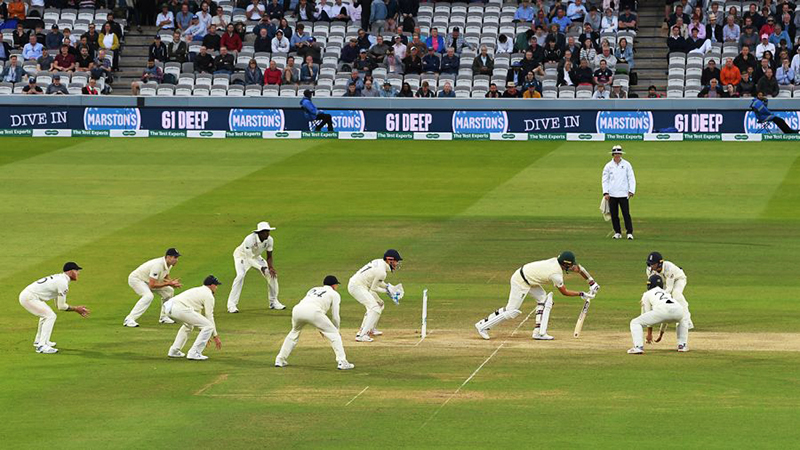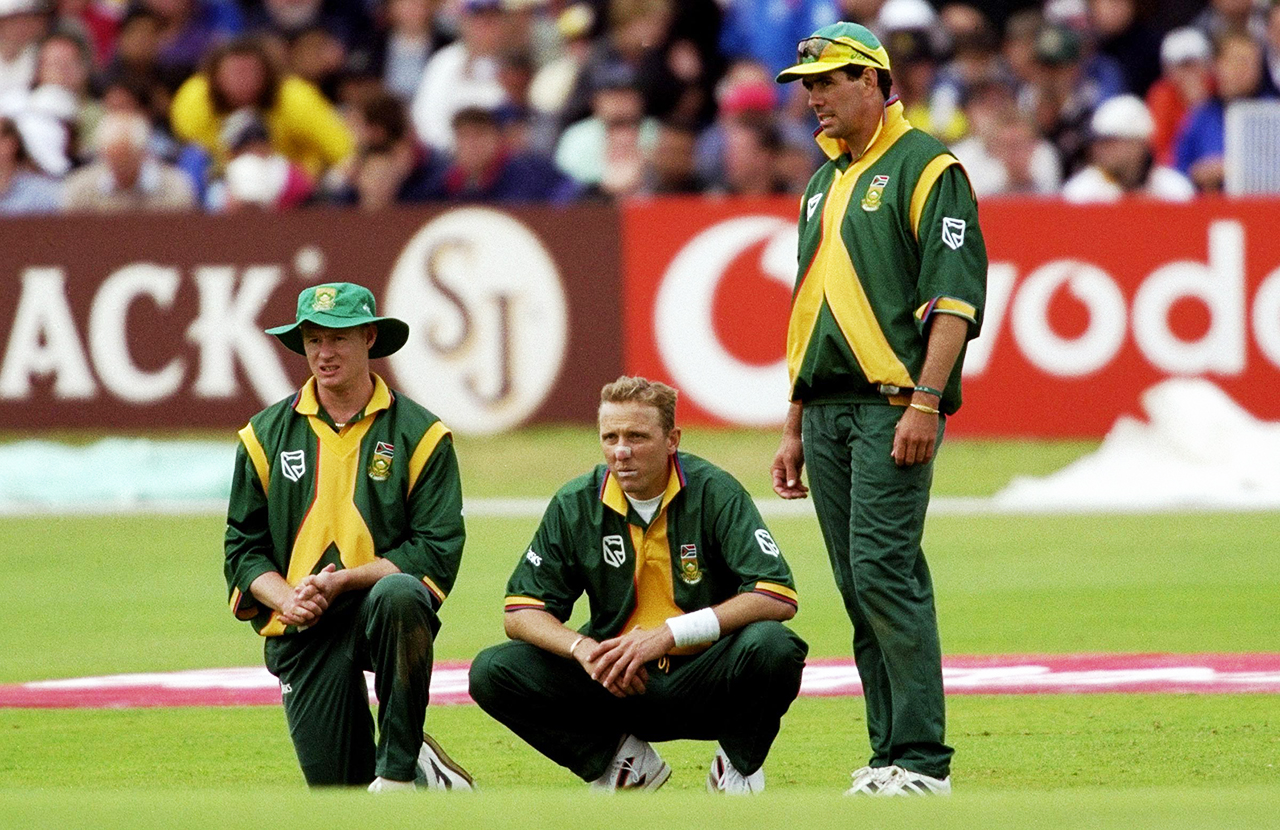Since the beginning of the 21st century, there have been significant new developments and changes in the game of cricket. The introduction of T20 cricket is arguably the most notable addition that has introduced fast-paced cricket in the form of 20 overs a side game. This is primarily due to the action-packed nature of T20 games that made this type of game very popular and attracted huge numbers of spectators within a very short span of time.
Franchise-based T20 leagues all over the world appear to have priority over any other form of cricket due to the high degree of entertainment and the substantial commercial gain, both for the boards and for the players involved.

There has been a common perception that the importance of Test cricket has somewhat diminished due to the high influx of franchise based T20 league cricket, T20Is and ODIs, hence fewer Tests matches are being played these days. When comparing the statistics for Test cricket played from 2001 to 2020 (the time-period where ODIs and T20ls really gained immense popularity) with Test cricket played from 1981 to 2000, the findings are somewhat surprising!
Despite increasing T20I and One Day limited overs cricket, 869 Tests have been played during the last 20 years compared to 634 Tests played from 1981 to 2000, which is an increase of approximately 37%. This occurred during a period in which many new countries were granted status to play officially recognized T20I and ODI, especially during the last 10-15 years.

Obviously, the increased numbers of matches are largely due to the fact that Bangladesh started playing Test cricket post 2000, South Africa only played 7 years of Test cricket during 1981-2000. Sri Lanka and Zimbabwe were somehow not awarded regular Test matches in pre-2000 era. Let’s have a look at all Test playing countries and see how much Test cricket was played during 1981-2000 and compare that with the next 20 years from 2001-2020. For the sake of simplicity and to have more balance comparison, countries like Zimbabwe, Bangladesh, Ireland and Afghanistan are not considered in this analysis as they all started playing cricket post 2000 era. Subsequently, Test matches played by regular teams against these countries are also not included in the count.

Apart from Pakistan and West Indies, all regular Test-playing nations played more Test cricket in the 2001-2020 period compared to the previous period of the same length. Increases for South Africa and Sri Lanka seem phenomenal but there is a valid reasoning behind these numbers. South Africa played very limited Test cricket (74 Tests) in 1981-2000 due to their re-admission into Test cricket in 1993. Sri Lanka having stated Test cricket in 1981 were not awarded regular Test until they won 1996 World Cup and started defeating major teams on more regular basis. This was the time Sri Lanka were considered on par with other teams and received more Test match share in the ICC Test calendar.
However, the major beneficiary is India, who played approximately 30% more Test cricket in 2001-2020 compared to 1981-2000, which is by far the highest increase among all regular Test playing nations. Why is this so? Why is there not an even distribution of Test cricket to all countries if ICC’s main objective is to promote the game?
Obviously, the answers to these intriguing questions have many economic factors that need ICC considerations. The plain fact is that Test cricket is more often awarded based on broad marketability of the game and maximizing revenue generation rather than equal distribution to all countries. The recently concluded World Test Championship is a very good example to prove this point; all major teams on the points table played a different number of matches and different lengths of Test series before the two finalists were decided.
England played 21 Tests as part of WTC whereas New Zealand played only 11 Tests, which is approximately half of what England played. How is it practically possible to have a fair team standing (unless some mathematics is involved to average out points earned) when all participating teams played a different number of games? Indeed, it seems a very confusing and unfair means of deciding who is the ultimate Test Champion.
Now we shall take a similar look at ODIs. Again, the same yardstick is used to review the number of ODIs played by each team during 1981-2000 and compare that with number of ODIs played during 2001-2020. Here minnows like Zimbabwe and Bangladesh are not excluded so that we see what their share of ODI is compared to major teams during the last 20 years.

Again, India emerges at the top having played more matches than any other team whereas Pakistan is at the other end of spectrum having played less ODIs during 2001-2020 than 1981-2000. It is, however, good to see that teams like Zimbabwe and Bangladesh also received a fair number of ODIs compared to major teams.
The above comparative numbers also show all majors Test cricketing nations have all together played approximately 41% more ODIs during the last 20 years, which clearly shows more international cricket is being played these days than at any other point in time in the entire history of cricket. We have more Test matches and ODIs whereas T20I are also being added to an already cramped cricket calendar during the last 10-15 years.
In addition to this, every cricket board has its own T20 league that needs to be accommodated every season, which indicates that cricket is being played throughout the year without any break. It is unlike yesteryears when there were distinct cricket seasons starting with English county season and West Indies used to host a Test series almost at the end of every cricketing season. Now the concept of ‘’cricket season’’ such as in 1976-77 or 1985-86 appears to be phasing out and has been gradually replaced by the calendar year.
However, there are a few interesting areas that need to be probed more deeply. Why is this increase of cricket not evenly distributed amongst all teams? Why are a few specific teams get a higher share of cricket than others? India has played more Test and ODIs than any other country during the last 20 years. Pakistan and West Indies do not get enough Test matches and ODIs as many other teams. Why do we have this disparity? What is the basis or reasons for this uneven distribution of Test matches? Is it cricketing skills, team marketability or their respective board’s influence that is bringing more games for some countries and less for others?
During the 1970s and 1980s, stronger teams used to play more matches, especially 5 match series. Take the example of West Indies that was arguably one of the strongest teams in the history of Test cricket during those days.
From early 1981 until 2000, West Indies played 24 Test series comprising 5 or more Test matches. They won 17, lost 5 and drew 2. In fact, they remained undefeated in any 5-Test series from 1980 to 1995 by winning all their 5-match series.
On the other hand, India played 12 Test series of 5 or more matches since 1981. Of these, they lost 10 and won two. The two that they won were both played on their home grounds. England and Australia, however, were the main beneficiaries of this rather unfair allotment of 5 match series with mixed results. England managed to play 5 match series every year.

Pakistan was certainly the unluckiest team, getting only 5 series of 5 or more Tests despite showing the best results by winning 4 out of those 5 and losing just one series 2-1 to Australia in 1983-84. Pakistan also defeated England on their 5-match tour in 1987 and 1992. It’s now been 29 years since Pakistan played a 5-match series.
This is how each team performed in their 5 or more match series since 1981:

New Zealand last played a 5-match Test series in 1971-72, and have so far played 5 such series but never won any. Sri Lanka, Bangladesh and Zimbabwe never played any Test series of more than 3 Tests. Statistics show that only England and Australia play regular 5 Test series and very often against each other! Other teams like India, West Indies and South Africa played very few 5 match Test series, whereas Pakistan and New Zealand did not play any at all for decades!

A significant increase in Test series of two matches has occurred ever since T20I came into the limelight. Certainly, these 2 match Test series created space for more limited overs matches. Another important and perhaps unfortunate factor that is being used to create space for more limited overs cricket is the curtailment of first class matches on any tour.
During the pre-2000 era, any team visiting England used to play at least 8-10 first class games against various county sides but today those county games are largely replaced by limited overs cricket or the length of the tour is reduced by skipping those many first-class games.

When Pakistan toured England in 1996 for three Tests and three ODI, eight first class games were on the itinerary along with four List A games. When Pakistan toured England in 2016 for four Tests, five ODIs and one T20I, only 2 first class games were part of the tour – a clear indication that first-class cricket is affected by limited overs cricket. Perhaps this is the reason many newcomers have hardly any notable first-class experience before representing their countries at the highest level.
The changing trend of traditional cricket over the last few years has shortened playing times and helped skyrocket its commercial gain. With all the big money involved in the game, cricket is more like an industry than a game. This demands more transparency and equality than ever before.
ICC bears the professional and moral responsibility towards all major stakeholders that all major Test playing teams are treated equally and in a fair manner with regards to Test cricket share. No cricket board must be allowed to use their influence or position to receive more games. With 104 nations as official members of the ICC, it is an absolute requirement that ICC deliver on this major challenge and continue with their efforts to make the game even more popular globally.
